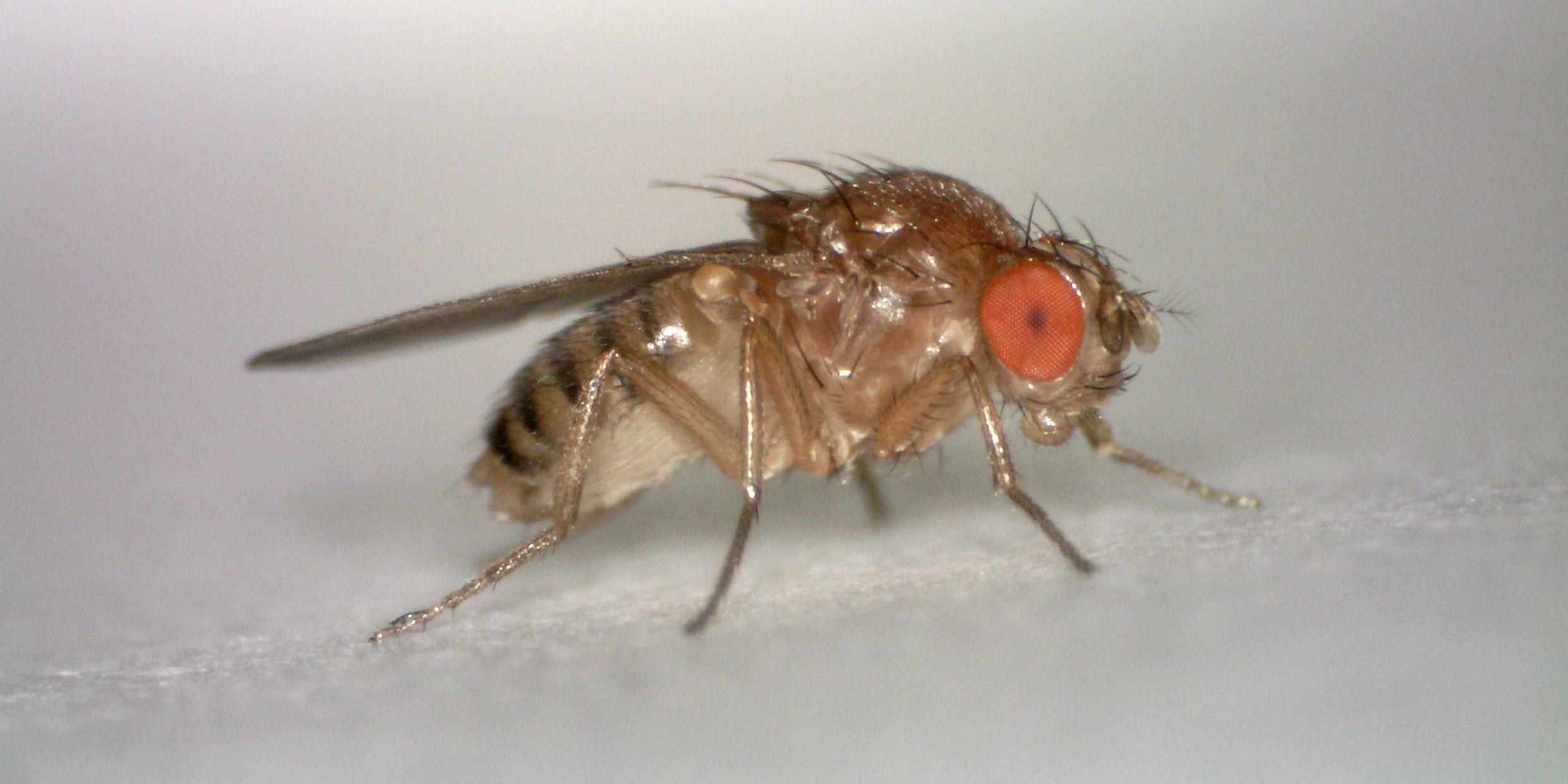Originally published 4 April 2000
Drosophila melanogaster, the “black-bellied dew lover,” better known as the fruit fly, has joined the list of creatures whose DNA has been sequenced. It is the second multicelled animal to achieve this distinction, with the tiny worm Caenorhabditis elegans.
No surprise that Drosophila is so quick to the post. The fruit fly was adopted by T. H. Morgan in his important studies in genetics that began at Columbia University in the early years of this century. These studies led to the classic textbook of Morgan, Sturtevant, Muller, and Bridges, Mechanisms of Genetic Inheritance, which in 1915 established the link between genes and chromosomes. Since that time, much of what we know about mutation, speciation, and other genetic phenomena has been discovered with populations of fruit flies in nature and in the lab.
Drosophila is an ideal research animal. It is small enough to breed in the lab in large numbers, but large enough to examine with only modest magnification. And it has a short life cycle, which means it can be bred through many generations during a typical graduate student’s time of study.
Like you and me, Drosophila begins life as a mother’s egg fertilized by a father’s sperm. Within a day, the egg hatches to produce a tiny larva, or maggot. The larva typically feeds upon yeasts that it finds in rotting fruit. Six days (and a few molts) later, the larva seals itself up in a hard brown capsule, or pupal case. It remains in this enclosure for four days, during which time almost all of the larval organs dissolve into a soupy mix from which the organs of the mature fly are put back together. When the transformation is complete, the adult fly inflates a little bag on its head, which forces open a trap door in the pupal case.
Out it pops, generally in the early morning (Drosophila means “dew-lover”). Its agenda is terribly single-minded: Find a mate. A male fly chases a female and vibrates his wings to produce a “love song” of clicks and whirs. If the pitch or rhythm is not just right, the female shows no interest. If she responds, then a little foreplay begins while the male continues to vibrate. Copulation follows, which can last as long as 15 minutes. From then on, it’s all downhill; the female lays her fertilized eggs, hundreds at a time, and the cycle begins again.
All of this is pretty much programmed by the approximately 13,600 genes on four pairs of chromosomes that have now been more or less completely transcribed. The genes are strings of paired chemical units called nucleotides, of four types, designated A‑T, T‑A, G‑C, and C‑G. And somehow it’s all there in the four-letter code — the plan for making a maggot, and then rearranging the maggot to make a fly; the alarm clock that causes the fly to emerge in the dewy morning; the love song; and all the rest.
Humans are more complex than fruit flies — more genes, more chromosomes — but many of our proteins and their way of functioning are virtually the same. Much of the basic biochemical machinery of human life evolved before the ancestors of fruit flies and humans diverged a half-billion years ago. There is a wonderful unity to life at the level of the genes.
And a wonderful unity to life, too, among the teams of scientists who have successfully sequenced the Drosophila genome.
The article in Science announcing the achievement had approximately 200 authors, including names like Amanatides, Agbayani, Basu, Blazej, Bolshakov, Chandra, de Pablos, Ferraz, Gu, Jalali, Murphy, Puri, Rubin, and Zhang — an apparent United Nations of ethnicity — working in public and private institutions in eight countries.
It is one of the glories of science that it manages to transcend the fractious divisions that characterize so many human activities. The thing that struck me most forcibly as I read the report about sequencing Drosophila’s genome was the list of nearly 200 authors, of every race, ethnicity, gender, and presumably politics and religion, working side by side (physically and electronically) to unravel the DNA of a tiny fly.
And why not? At the level of the human DNA, we are all pretty much the same, far more alike than we are different. We are a single species that somehow manages to spend an inordinate amount of our time bashing each other for perceived differences.
Human DNA contains 20 times more nucleotide pairs than that of Drosophila, and the number of potential authors working on the human genome project is probably 20 times greater, too. But surely those researchers are equally diverse, and equally an illustration of how we can all get along if we think like biologists rather than xenophobes.
Sometime within the next few years, the human genome will be completely sequenced, and we will join the ranks of those creatures whose four-letter plan of life can be read on the Web — including Drosophila melanogaster, yeast-sipping singer of love songs, lover of dew, for nearly a century a stalwart ally in the quest for the unifying secrets of life.



